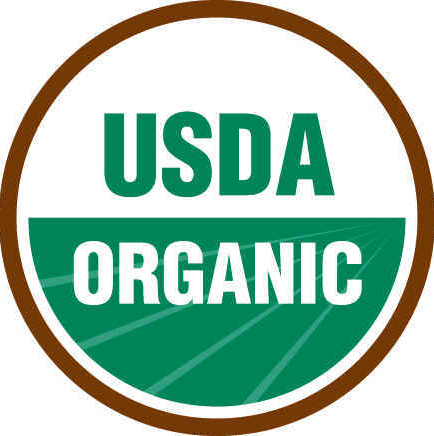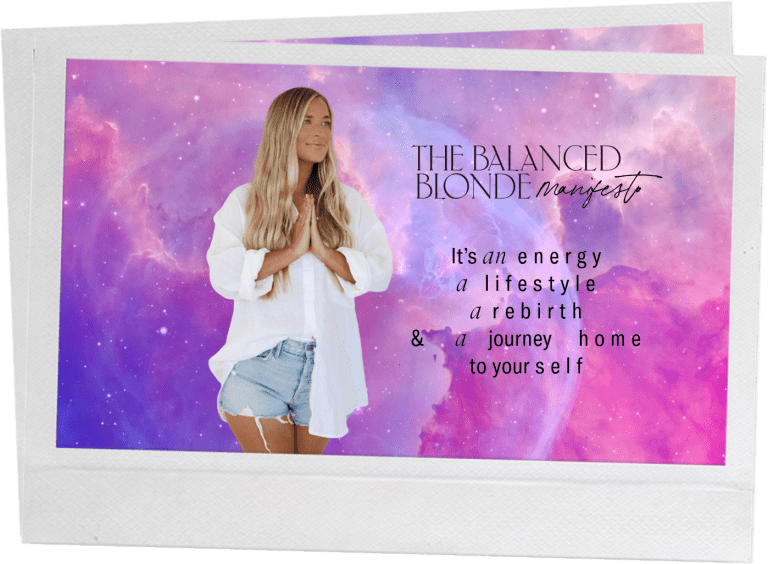
When I moved to NYC a little over 3 months ago, I was on the hunt for healthy restaurants in my area. And not those mock healthy restaurants that serve a ton of processed foods in place of meat and dairy. I wanted to find places that served good, nourishing food with ingredients that I could trust.
It was really by stroke of luck that my mom and I stumbled into Hu Kitchen the week she was here moving me in. It is directly next to my school, The New School, so we were in our small range of familiar territory. It was late afternoon and my body was exhausted from fifteen trips to Bed, Bath & Beyond, West Elm, and all of those other fun places you go when you’re moving in. We needed an afternoon pick-me-up, and the big overhanging sign that said “Food For Humans” sounded trustworthy enough.
Keep in mind, as a vegan it’s not easy to happen upon a restaurant and actually be able to eat there. We walked in fully intending for this to be the first stop of many until we wound up at a juice place because nothing else quite fit the bill (healthy + vegan options + good atmosphere). Hu Kitchen far exceeded every one of our expectations.
There is a juice and smoothie counter, an organic bar, a cold case full of yummy food, a hot plate section, a refrigerator full of to-go items, granolas, desserts, etc. and my personal favorite: the mash bar. But we’ll get back to that.
Basically, we were in heaven. As a vegan I am always looking for restaurants that satisfy both my needs and the needs of my friends/family who are not vegan. I ordered a delicious medley of veggies – perfectly seasoned cauliflower, sweet potato bites and broccoli rabe. My mom ordered the chicken, which is her staple dish everywhere we go, and she said it was some of the best she’s ever had. “If not the best,” which is saying a lot, because she’s had some longstanding faves.
Needless to say, I’ve ended up going back to Hu Kitchen more times than I can count. I have dragged all of my friends in the city and my visitors there, and never once has someone been disappointed. People actually beg me to go back… and I never deny!
** Yes, Hu Kitchen is a paleo restaurant while I am vegan, but the paleo diet cuts out dairy, refined sugars and grains, refined salts and processed oils. It is largely plant-based, so it is quite easy for a vegan to find things to eat. Plus, it’s more about being aware of what you’re putting into your body than anything else, and I know I can trust Hu when it comes to the ingredients they use.
I had the privilege of sitting down with Hu Kitchen CEO/Founder Jordan Brown. (Same name, I know. Very cool.) When I first walked in to meet him I asked one of the girls at the mash bar where I could find him, and to my surprise they pointed to a young guy dressed in athletic clothes who was in deep conversation with some customers. I had expected someone much older, so I was immediately impressed.
Jordan ordered me a smoothie and we sat down at one of the tables upstairs. He told me how he became paleo, how he fell into the restaurant business, what his motivations were for starting Hu Kitchen, and everything there is to know about Hu (which, no, is not an Asian name). Here were some highlights of our convo:
Q: How did you fall into the paleo lifestyle?
A: I did investment banking for a year and then I was a real estate developer for 7 years. I was always athletic and in pretty good shape, and I thought I was always eating healthy by eating whole grains and whole wheat and all of those other buzz words. I didn’t really know any better. One day, after a real estate convention in Las Vegas I was in the airport and I was pretty hung over. I hadn’t slept and I drank way too much coffee, so I was in the state of being over-caffeinated and pretty hyped up. I had nothing to do, and I spotted a red book in the airport called “The Ultra Mind Solution” by Dr. Mark Hyman. I love self-help books, but it really wasn’t a self-help book. It was more of a diet book. Not “diet” in the terms that people think of the word diet. It was more of what is causing things like brain fog, diseases of Western society, sluggishness, premature aging. It was about functional medicine.
I didn’t know what any of this stuff was. I didn’t know what gluten was, I didn’t know what blood sugar was, I didn’t know what insulin was, it was just interesting to me, so I devoured the book and decided to try cutting out gluten. It was amazing. I had this skin condition on my arm and my chest for the prior 6 years that I could never really get rid of. I had gone to a bunch of different doctors who told me to take this pill or that, and it would kind of go away and then it would come back. I cut gluten out and it went away in 6-7 days. That was the first indicator of the power of food to heal and to do things that you never really thought were possible. Just by changing what you eat. 
I read a ton of different types of dietary theories and tried them out on myself with isolated variables for two or three week intervals by cutting them out and bringing them back in. Meanwhile, my sister at the time was a typical NYC girl who did tons and tons of cardio and would then have frozen yogurt for dinner or a whole wheat bagel with low-fat cream cheese for dinner and think that she was doing her body good. I would say to her, “you’re having a hundred calorie pack for dinner but you’re eating chemicals and refined sugars that aren’t doing anything for you except for making your work outs useless.” Once she had a child, she started to do the research and she adopted the lifestyle too.
(Jordan & his sister/co-founder Jessica Karp. Photo from NYTimes.com.)
Q: How did you come up with the idea to create a paleo restaurant in NYC?
A: I kept reading more and more and getting more interested. During this time I became kind of a bloodhound for all of the BS terms that the food industry throws on labels. Even in the health food industry, you see the terms “natural,” “healthy,” and “fresh” and it’s a joke. It means nothing. I would look at products and be like that’s such BS. I know what they’re doing.
I came across a book called The Primal Blueprint, which is a paleo book, so I tried that and nothing worked faster and more furiously than those tenets. My sister and I decided to create a brand that’s based on trust. We don’t use any sneaky terms that don’t mean anything, and decided to create something where the goal is to reduce inflammation in the body and keep blood sugar swings at bay as much as possible.
(Photo from www.marksdailyapple.com.)
It’s genuine because we come at this from the customer vantage point. I’m not from the food industry. I had no experience with food, I don’t even know how to cook basically. I knew what I wanted in my food and what I didn’t want in my food, and that’s what we try to do.
Q: Since you were new to the restaurant world before opening Hu, what did you know you wanted in the restaurant and how did you carry that out?
A: We wanted to be a one-stop shop where you could get breakfast, lunch, dinner, snack products, everything. In terms of the aesthetic, we wanted something that was unique. I don’t like straight edges, so that’s why everything in here has kind of rounded edges. We wanted to create a cool spot to come and hang out, somewhere that’s not a very sterile atmosphere like a lot of health food places seem to be for whatever reason. We never liked that and we didn’t want to create that.
The aesthetic should embody a place that you want to be at. It should be in conjunction with the food. The food is more simple and primal, and that’s why I don’t like man-made straight edges. Yeah, we have a lot of technology in here, but it’s a good combination of a rustic urbanism with some good technology.
Q: Does there seem to be a large market in NYC for paleo and veganism?
A: There is a massive market here for paleo and veganism. There is a massive market for people who are tired of being tricked with all these terms that are thrown around that are deceiving and mean nothing.
Q: How do you find organic, trustworthy suppliers?
A: One of the things that bothered me as a consumer was when I would go to a place and see on the menu, “organic when possible,” which often means “organic when we can make the numbers work.” At Hu, we are not 100% organic, and we don’t claim to be. In my own personal life before Hu, I found it too difficult and expensive to be 100% organic, so I tried to get a handle on what the most important items were for me to go organic – how I could most feasibly remove toxins from entering my body. At Hu, we have the same approach, and we will not stray from it if the cost of an organic ingredient goes up. When we say that an ingredient is organic, that means we source USDA-certified organic. In the instances where we can get a supplier who’s truly abiding by organic principles and is either against USDA organic certification or doesn’t want to pay for it, and if they’re willing to put in writing that they abide by organic practices, then we’ll buy it and label it as not certified but verified in writing. In my experience since we launched last year, many suppliers were not entirely honest about their practices being organic. So we can’t stand behind those products with a good conscience.
Q: What oils do you cook with?
A: We cook with a coconut oil and olive oil (but not on direct heat). Direct high heat we don’t use olive oil because it makes it go rancid really quickly. We don’t use any canola oil here, which most places do. They typically use GMO canola oil, which is very cheap. Or they use the poor quality oils like cottonseed oils, but that’s more fast food type of places I believe.
Q: Most popular vegan dishes?
A: People love our Grandmaster Veg. It’s kind of like a vegetable lasagna, but on top it doesn’t have a weird vegan cheese. It’s just our cashew cream on top. People also love our chocolate bars (which are vegan) – our almond butter puffed quinoa bar is the most popular. There is no dairy, soy or emulsifiers in it whatsoever.
My awesome dinner at Hu a few nights ago – carrot arugula salad, sweet potato bites, green juice, graham crackers & their newest flavor of chocolate!
Q: Tell me about the mash bar.
A: The mash bar came about because that’s how I used to snack. I would come home and I wouldn’t want to get frozen yogurt or health bars because a lot of them are just candy bars. So I would go to Whole Foods, get a bunch of different ingredients like fruit, coconut, cacao nibs, honey, almond butter, whatever I could find, mash it up, and that was my snack. So we decided to commercialize that and turn it into the mash bar.
Q: How did Hu get its name?
A: We basically didn’t know what kind of name we wanted. At the time I was reading a lot of paleo books on different anthropological food studies. We wanted to do something that involved human. Someone suggested Hu, and it was kind of awesome. A little mysterious. A lot of people do think it’s an Asian restaurant. We ran with it. Very simple.
(Fun fact: The “u” in Hu is based off of Jordan’s hand!)
** If you live in the NYC area, check out Hu. You won’t be disappointed! You might see me in there getting a juice and a chocolate bar post-yoga or grabbing some veggies before class, and you’ll definitely see Jordan (the other Jordan) chatting with people and running the show. If you see either of us, please do say hi 🙂
The BEST chocolate bars of all time. Guilty of eating these for dinner from time to time.


















